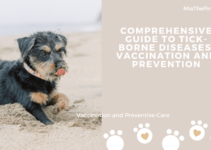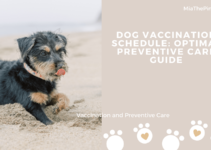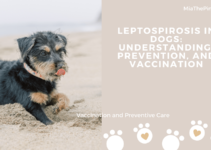Understanding Rabies in Dogs: Essential Vaccination and Preventive Care
When it comes to the health and well-being of our furry friends, one of the most critical aspects is understanding and preventing diseases that can pose a threat to their lives. Among these diseases, rabies stands out as a highly dangerous and potentially fatal condition. In this article, we will delve into the intricacies of rabies in dogs, including its transmission, symptoms, vaccination schedule, and preventive measures.
What is Rabies and How is it Transmitted?
Rabies is a viral disease that affects the central nervous system of mammals, including dogs. It is primarily transmitted through the bite or scratch of an infected animal. The virus, which resides in the saliva of infected animals, enters the body through open wounds or mucous membranes. Once inside, it travels to the brain, causing severe inflammation and damage.
The transmission of rabies can also occur if the infected animal’s saliva comes into contact with an open wound or mucous membranes. It’s important to note that rabies can be transmitted not only by other dogs but also by wildlife, such as raccoons, bats, and skunks.
Importance of Vaccinating Dogs Against Rabies
Vaccinating dogs against rabies is not only essential for their health but also crucial for public safety. Rabies is a zoonotic disease, meaning it can be transmitted from animals to humans. By vaccinating our dogs, we not only protect them from this deadly disease but also create a barrier against its spread to humans and other animals.
Furthermore, most countries and states have regulations and laws in place that require dogs to be vaccinated against rabies. Compliance with these regulations not only ensures the well-being of our furry companions but also helps maintain a safe environment for the community as a whole.
Common Symptoms and Stages of Rabies in Dogs
Identifying the symptoms and stages of rabies in dogs is crucial for early detection and prompt intervention. The disease typically progresses through three stages: prodromal, furious, and paralytic.
In the prodromal stage, which lasts for one to three days, dogs may exhibit subtle behavioral changes, such as anxiety, restlessness, and increased irritability. They may also experience a loss of appetite, fever, and mild discomfort at the site of the bite or scratch.
The furious stage follows the prodromal stage and is characterized by aggressive behavior, excessive salivation, and difficulty swallowing. Dogs in this stage may also display erratic behavior, such as restlessness, disorientation, and even seizures.
The paralytic stage, which is the final stage of rabies, leads to muscle paralysis, starting from the hind limbs and gradually spreading to other parts of the body. During this stage, dogs may experience difficulty breathing, drooping of the jaw, and a general weakness.
Understanding the Rabies Vaccination Schedule
Proper vaccination is key to preventing rabies in dogs. The vaccination schedule typically involves an initial dose administered when the puppy is around three to four months old, followed by booster shots at regular intervals. The specific schedule may vary depending on the country or region, so it’s crucial to consult with a veterinarian to ensure compliance with local regulations.
It’s important to note that even if a dog has been previously vaccinated, it may still require a booster shot if exposed to a potentially rabid animal. Prompt revaccination in such cases is necessary to boost the dog’s immunity and prevent the onset of the disease.
Preventive Measures to Minimize the Risk of Rabies
While vaccination is the cornerstone of rabies prevention, additional preventive measures can help minimize the risk further. Here are some essential steps to consider:
- Keep dogs indoors or in a securely fenced yard to limit their exposure to potentially rabid animals.
- Avoid contact with wildlife and unknown animals, especially those displaying abnormal behavior.
- Do not allow dogs to roam freely or interact with stray animals.
- Supervise dogs during outdoor activities, such as walks or hikes, to prevent encounters with potentially infected animals.
- Ensure proper waste management to discourage wildlife from entering residential areas.
- Report any suspicious or aggressive animals to local animal control authorities.
What to Do if a Dog is Exposed to Rabies
If a dog is exposed to rabies, immediate action is crucial. Here are the steps to follow:
- Isolate the dog from other animals and humans to prevent further transmission.
- Contact a veterinarian to assess the situation and determine the appropriate course of action.
- Provide the veterinarian with detailed information about the exposure, including the suspected source and the nature of the contact.
- Follow the veterinarian’s guidance regarding quarantine, observation, and potential revaccination.
- Monitor the dog closely for any signs or symptoms of rabies during the observation period.
Remember, early detection and intervention play a vital role in preventing the spread of rabies and ensuring the well-being of both dogs and humans.
In conclusion, understanding rabies in dogs is crucial for their health and the safety of the community. By vaccinating our furry companions, being aware of the symptoms and stages of the disease, following the recommended vaccination schedule, and implementing preventive measures, we can significantly reduce the risk of rabies and protect our beloved pets from this deadly disease.
FAQs
1. What is rabies and how is it transmitted?
Rabies is a viral disease that affects the central nervous system of mammals, including dogs. It is primarily transmitted through the bite or scratch of an infected animal. The virus enters the body through open wounds or mucous membranes and travels to the brain, causing severe inflammation and damage. Rabies can also be transmitted if the infected animal’s saliva comes into contact with an open wound or mucous membranes.
2. Why is vaccinating dogs against rabies important?
Vaccinating dogs against rabies is essential for their health and crucial for public safety. Rabies is a zoonotic disease, meaning it can be transmitted from animals to humans. By vaccinating our dogs, we not only protect them from this deadly disease but also create a barrier against its spread to humans and other animals. Compliance with regulations requiring rabies vaccination helps maintain a safe environment for the community as a whole.
3. What are the common symptoms and stages of rabies in dogs?
Rabies in dogs progresses through three stages: prodromal, furious, and paralytic. In the prodromal stage, dogs may exhibit subtle behavioral changes, loss of appetite, fever, and mild discomfort at the site of the bite or scratch. The furious stage is characterized by aggressive behavior, excessive salivation, difficulty swallowing, restlessness, disorientation, and seizures. The paralytic stage leads to muscle paralysis, difficulty breathing, drooping of the jaw, and general weakness.
4. What is the rabies vaccination schedule for dogs?
The rabies vaccination schedule typically involves an initial dose administered when the puppy is around three to four months old, followed by booster shots at regular intervals. The specific schedule may vary depending on the country or region. It is important to consult with a veterinarian to ensure compliance with local regulations. Even if a dog has been previously vaccinated, a booster shot may be necessary if exposed to a potentially rabid animal.
5. What preventive measures can be taken to minimize the risk of rabies?
In addition to vaccination, there are several preventive measures that can help minimize the risk of rabies. These include keeping dogs indoors or in a securely fenced yard, avoiding contact with wildlife and unknown animals displaying abnormal behavior, not allowing dogs to roam freely or interact with stray animals, supervising dogs during outdoor activities, ensuring proper waste management, and reporting suspicious or aggressive animals to local animal control authorities.



